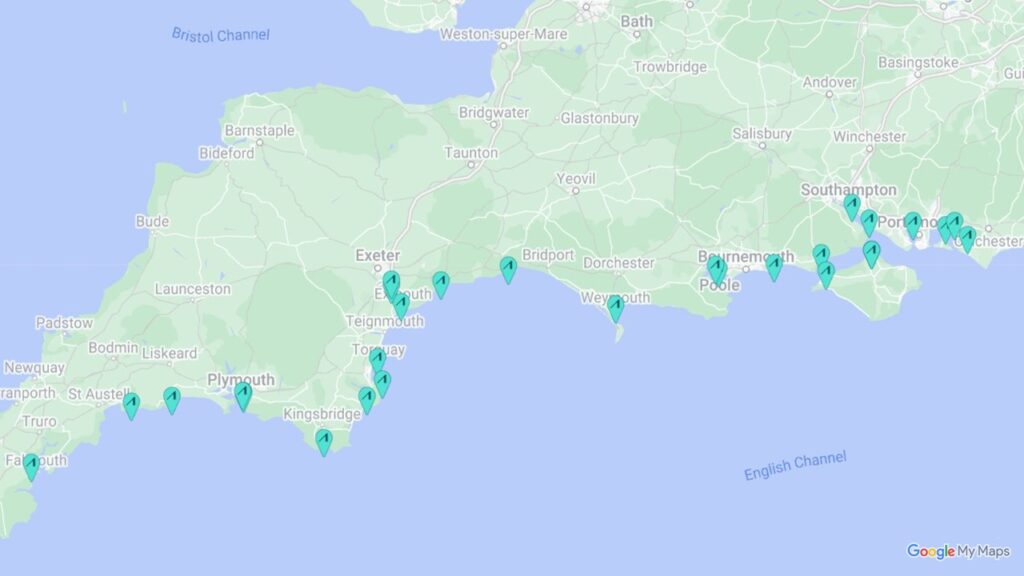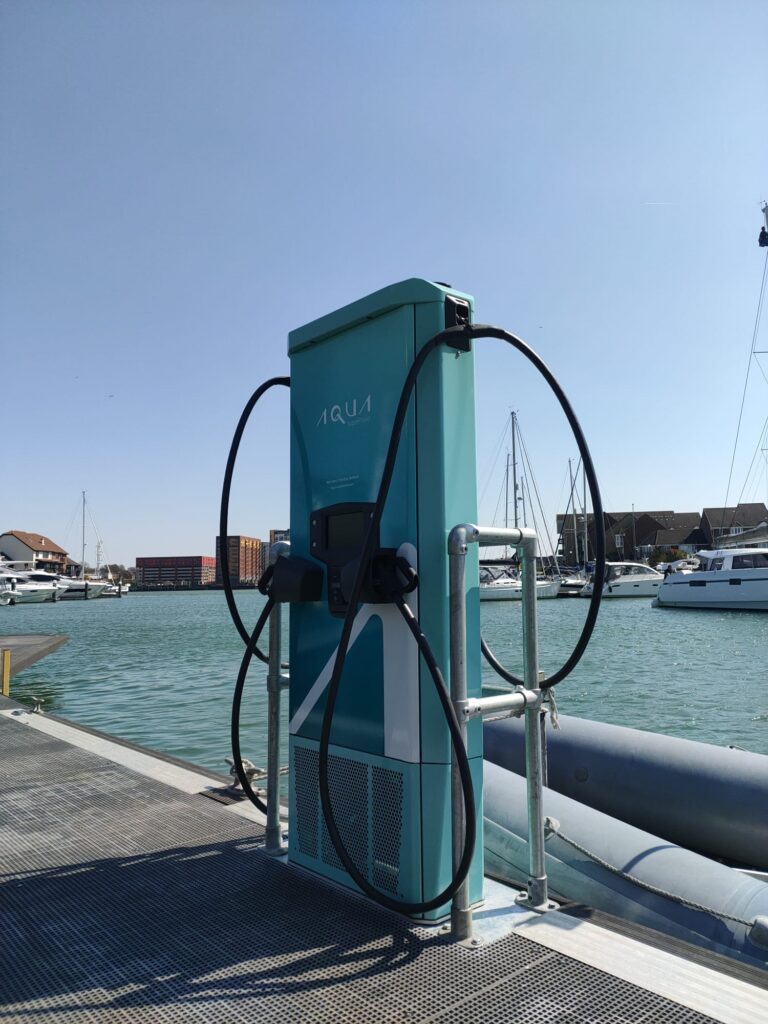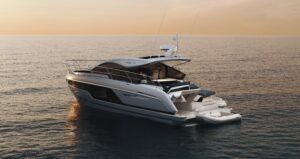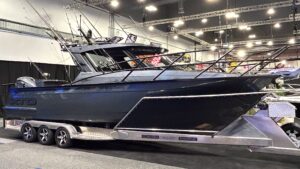UK marine electric charging route ramps up with ten new locations

Marine fast charge network operator Aqua superPower is leading a consortium that has secured £3.2m UK government funding to deliver a marine electric charging infrastructure along the UK’s south coast.
Ten sites along the south coast are being plugged into the UK’s clean maritime development as part of a collaborative and government-funded initiative.
The Electric Seaway UK charging route
The Electric Seaway project will create the infrastructure necessary to power the region’s growing fleet of electric maritime vessels. It will be targeted at leisure and commercial vessels under 24m in size.
With charging available in an additional ten new locations along the south coast of the UK, the Electric Seaway will be supporting the already rapidly developing cluster of businesses in this area, encouraging further start-ups, and developing new jobs associated with low carbon marine.
The UK marine electric charging development is being driven by a consortium that has secured funding through the Clean Maritime Demonstration Competition Round 3 (CMDC3), a programme funded by the Department for Transport, and delivered in partnership with Innovate UK.
The Electric Seaway project brings together two UK businesses: electric boat charging operator Aqua superPower and ZPN Energy which creates battery solutions for off-grid applications. Its partners also include the University of Plymouth, South Hams District Council, and the UK Harbour Masters’ Association.

Alex Bamberg, CEO of Aqua superPower, says: “This is our third Clean Maritime Demonstration Competition win, which is testament to the knowledge and commitment of our consortium partners and reinforces Aqua superPower’s recognised expertise in marine charging and electrification. This is a fantastic opportunity to create critical marine charging infrastructure on the south coast of England that can provide confidence to both commercial and leisure users by minimising range and charging anxiety as seen in the EV sector.”
Electric charging on south coast
The Electric Seaway aims to deliver a battery solution suitable for shoreside applications, to develop the infrastructure to ensure batteries and chargers operate simply and efficiently, and to make use of all forms of energy sources including renewables.
South Hams District Council has ambitious carbon reduction and economic growth targets linked to the Plymouth and South Devon Freeport and will be providing a location for demonstration.
The Electric Seaway will have environmental sensors at all sites to monitor the impact of the new innovations and create a business model and strategy that will enable an increasingly wide-scale deployment of marine charging infrastructure.
James Foster, ZPN Energy CEO, says: “We are proud to have our unique battery backed ultra-rapid charging technology included to ensure locations with limited grid supply can have rapid charging, ordinarily this would have meant slow AC charging as you typically see in some roadside locations. These installations guarantee charge rates and prevent unnecessary load balancing. This technology was originally part-funded originally by Innovate UK so this is a great example of public funded innovations being used along with best-in-class technology in areas that may have traditionally struggled to gain investment due to low initial utilisation.”
The Electric Seaway builds on the success of the Marine eCharging Living Lab (MeLL) project, which involved a number of the current project partners and launched the UK’s first charging network for electric maritime vessels launched in Plymouth.
Dr Richard Pemberton, lecturer in mechanical and marine engineering design at the University of Plymouth, says: “There are a number of challenges we need to overcome if we are to meet the Government’s target of having a zero-emission maritime fleet by 2050. However, our existing work in this area has provided a number of solutions and shown what can be achieved through collaborations between industry, research, boat owners and other agencies. The Electric Seaway gives us the platform to build on that, and to enable more people and environments to benefit from the transition to cleaner fuels.”
Capt Martin Willis AFNI, executive officer & secretary of the UK Harbour Masters Association, adds: “The UK Harbour Masters Association strategy is to align (where favourable) future association policies, aims and objectives with government and Industry long-term policy – including ‘Maritime 2050’ & the Clean Maritime Plan.”
By enabling those vessels to move to clean energy, the £3.2million project will not only support the Maritime 2050 decarbonisation goals but prevent an estimated 300 tonnes of CO2 from being released into the environment each year.










